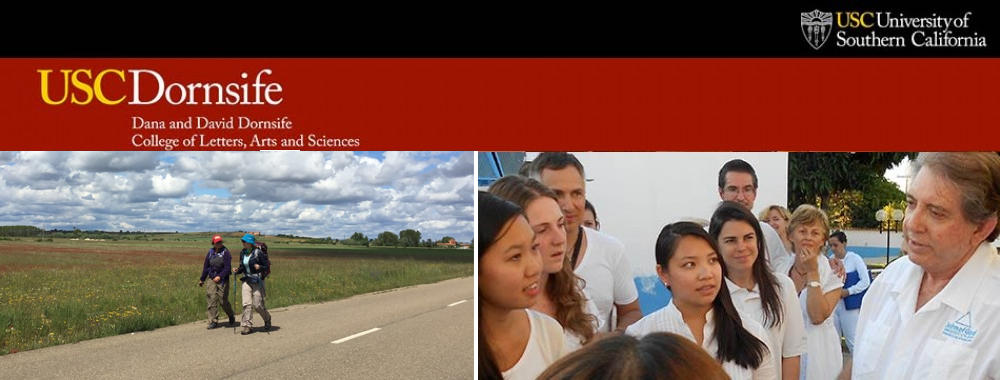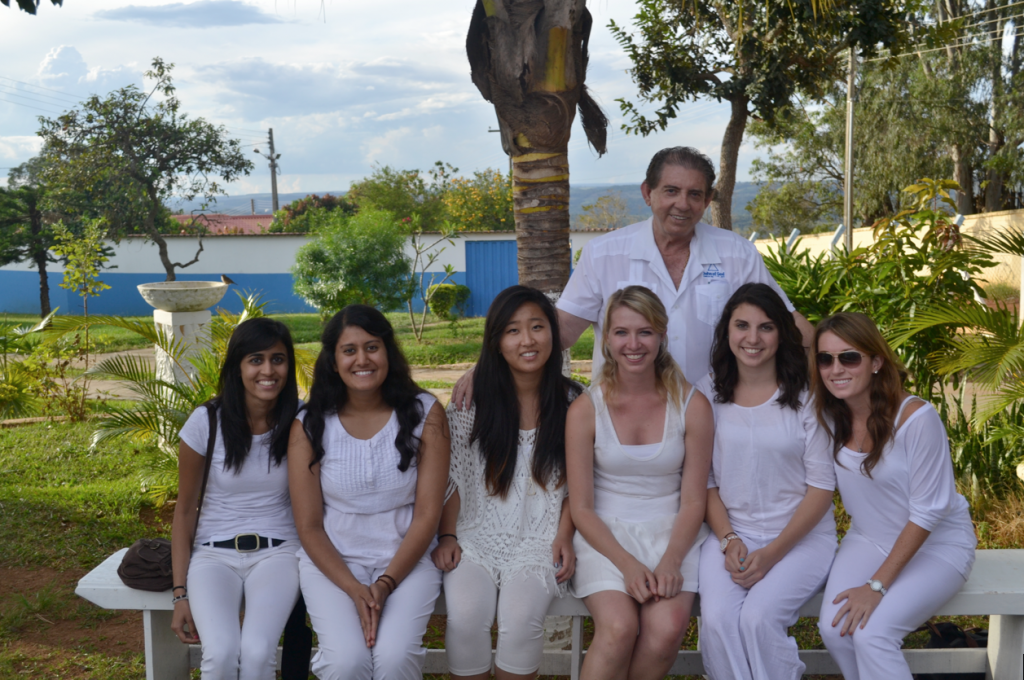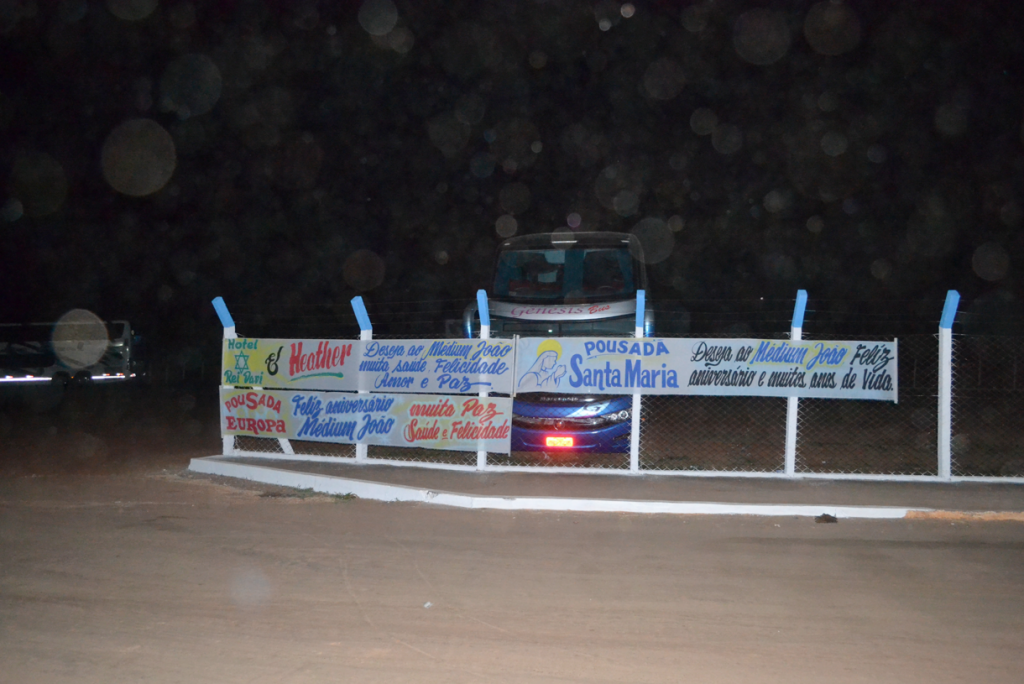By Amita Risbud, Senior majoring in Health & Humanity (B.A.) and Biology (B.A.), with a minor in Religion
As a pre-medical student with an extracurricular interest in religious studies, I have grappled with reconciling science and religion for some time, for the two fields are known to hold drastically different opinions on the nature of miracles. Scientists would be tempted to tell me that a supposed miracle is only due to pure chance, and that it could be ultimately proven by the scientific method. Those informed by religion and mysticism would insist that miraculous events are beyond any scientific laws or parameters, and that they ought just to be accepted with conviction and without question. What should we believe?
At the Casa de Dom Inácio de Loyola in Abadiânia, Brazil, I had the opportunity to witness incredible surgeries, and to hear several people’s testimonies to John of God’s work, as well as their opinions on the relationship between religion and science. João Teixeira de Faria, better known as John of God and an otherwise ordinary, uneducated Brazilian man, is thought to be a medium through which spirits of deceased doctors and Catholic saints work to heal and assist people with a variety of issues, including terminal diseases. The Casa also claims that hundreds to thousands of entities act on the hundreds of pilgrims who come through the place every day: people may be cleansed of conditions they never knew they had as they sit in the current room to meditate and seek the entities’ help.
Like most people who hear of John of God and the cult-like culture of Abadiânia for the first time, I had some difficulty grasping all of this and how plausible it could be. And yet, when I saw the physical operations with my own eyes, there was no denying that something incredible was going on. John of God would very clearly stick forceps up patients’ noses, and cut abdomens and pull out what appeared to be tumors with his bare hands. There was no magic trick here. Even an American physician present at the time of one of the eye scrapes remarked that no ordinary doctor could make cuts as meticulously as João made over the corneas of so many patients. How could João effortlessly perform surgeries without any anesthetics or antiseptics? How did his patients stand there without a scream in pain from the cutting? How could this illiterate Brazilian man cure people of debilitating diseases just as well as a Harvard graduate who trained for years just to do the same? Beats me.
But the physical surgeries were just a part of all the fascinating, miracle-based things reported to happen at the Casa. Visitors would go out after sundown with their cameras to capture pictures of entities floating around the premises. Anywhere from one to tens of orb-like spots could appear in the frame if the pictures were taken with flash, and these orbs were thought to be the entities. I got some myself (pictured below). From my experience with flash photography on many travels elsewhere, however, these orbs are a typical photo effect in dark settings, perhaps from the flash reflecting on dust particles; I wasn’t so keen to call them “entities”. Nevertheless, it was interesting to hear a new explanation to the spots, and more than anything, it was rather nice to see so many older people getting a thrill from having evidence of supernatural beings on their camera screens.
A number of people had also told me they had been healed of cancers and mental illnesses after visiting the sacred waterfall belonging to the Casa. I would overhear groups exchanging stories over dinner of how people would yelp as if going through something cathartic. One woman claimed St. Ignatius came to her in the form of a butterfly. Another shared that the waterfall helped her come to terms with a traumatic miscarriage.
So, I ask again, what should we believe? Are spirits and miracles a load of hogwash, or is there something divine that just cannot be explained by pure science?
To be honest, I think I’m too young and have had too few life experiences to develop a definite answer to that by myself. But I have a theory: regardless of whether it is science or a divine force that takes credit for the marvels of Abadiânia, the Casa de Dom Inácio certainly provides people with a wonderful environment that promotes wellness, happiness, and repose. It was great to see a loving community where people would gather to merrily sing Beatles’ tunes; drink soup together or grab smoothies at the juice bar down the street; and exchange experiences with tough diseases in an effort to comfort each other. Countless studies have shown that a good support group, stress-free environment, and the right practice of meditation and exercise can impact our genetics and affect our health very positively. This might be the biggest reason why all these people keep coming back to Abadiânia.
I think that some degree of people’s strong faith and openness to the possibility of healing without allopathic medicine also contributes to the healing process. If Karl Marx’s theory that “religion is the opium of the people” is true, and if a belief in divine orbs is what helps the sick people heal, so be it. That part of the healing process has always fascinated me. There may be wonders that religious convictions can do that Western medicine cannot, and the best thing might just to leave it at that. With or without scientific proof of spirits and miracles in Abadiânia, the Casa is a great place for people’s introspection and relaxation, and a chance to heal from good living. If we just put both the religious and scientific questions aside for some time, there are great benefits to embrace at this place. I think it’s really about how we approach it that affects the experience and what we get from it!



